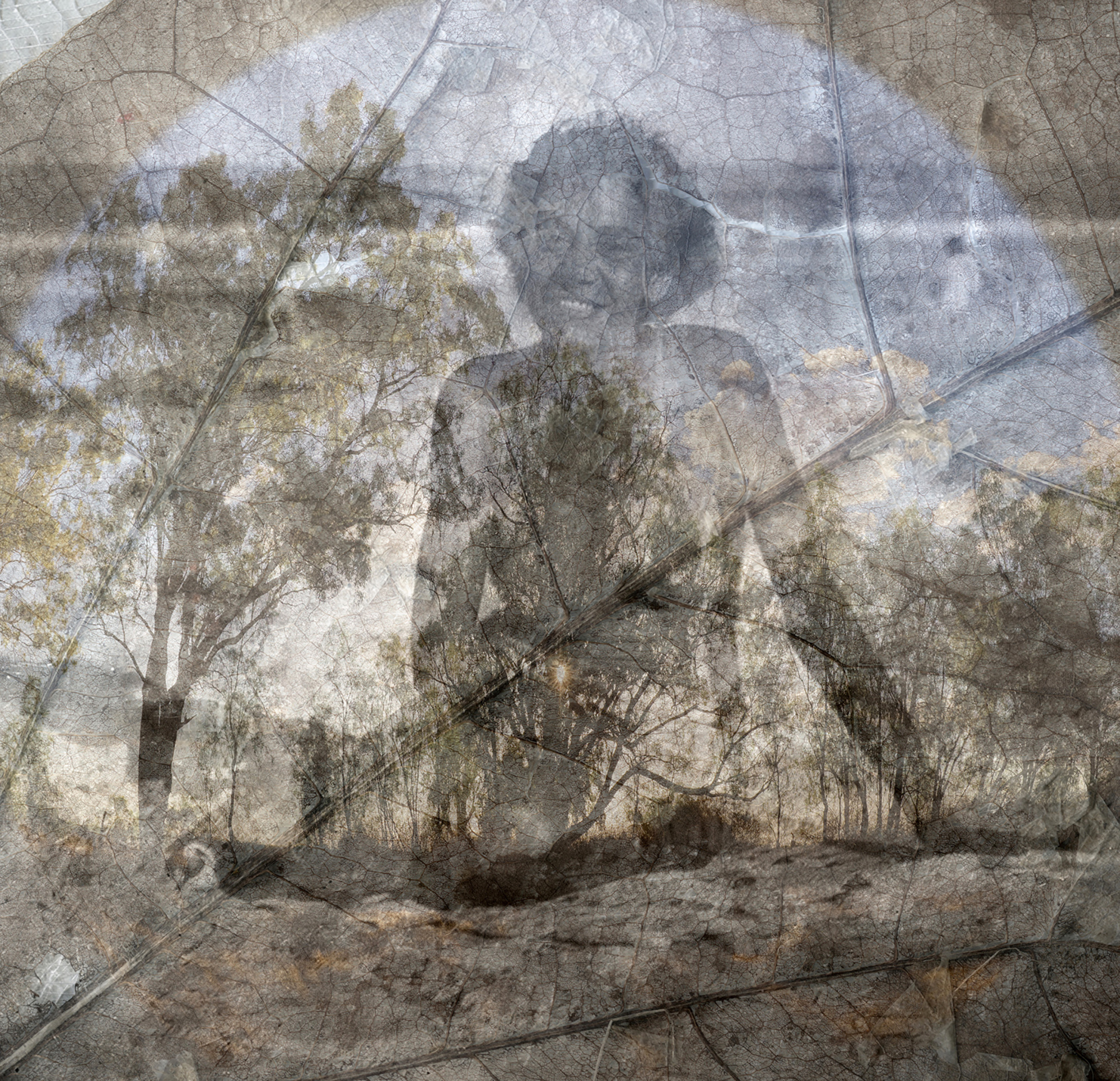Bigambul artist Dr Leah King-Smith has brought together a multi-faceted, immersive exhibition in collaboration with leading Indigenous artists, musicians and writers which opened this week at the QUT Art Museum.
A lecturer and academic Lead (Indigenous) in Learning and Teaching with the QUT School of Creative Arts, Dr King-Smith has created rhythm wRites, a genre-defying installation exploring simultaneity, interconnectivity, rhythm, ethereality, spatiality and sound.
"Rooted in a decolonising framework, rhythm wRites features new work produced by a team including Robert Andrew (Yawuru), Nici Cumpston (Barkindji), Keely Eggmolesse (Gubbi Gubbi and Gooreng Gooreng) and Ellen van Neerven (Mununjali Yugambeh)," said QUT Art Museum Curator Katherine Dionysius.
"Audio-visual installations drawing on First Nations experiences, histories, and intergenerational connectivity weave through the galleries alongside select works from Dr King-Smith's recent practice."
Professor Wesley Enoch, internationally acclaimed playwright and Indigenous Chair in the Creative Industries with QUT, acted as an advisor on the project which was supported by the Queensland Government through Arts Queensland.

Known for her ethereal, multidimensional photographic layering technique, Dr King-Smith explores interdimensional portals, seeking to evoke dream states that promote contemplative reverie. Born in Gympie, she has used her art to explore cultural discord and themes of identity. Her work has been shown and collected worldwide, including at the Venice Biennale and the National Gallery of Australia.
The rhythm wRites exhibition is on at the QUT Art Museum from 29 October 2024 - 9 March 2025.
Also opening this week is the Material Being exhibition, a selection of artworks from the QUT Art Collection which QUT Galleries and Museums director Vanessa Van Ooyen said invited visitors to reflect on the deep connection between materiality and our existence.

"Material Being explores how materials, textures, and tangible matter shape our perceptions of ourselves and the world," Ms Van Ooyen said.
"In these works, physical form is integral to artistic expression, carrying ideas that span philosophical, political, social, environmental, emotional, and aesthetic dimensions.
"In an increasingly digital world, marked by fractured human relationships and the environmental consequences of material exploitation, recognising the essential role of materiality in our lives is more urgent than ever."
As part of the collection galleries, the QUT Art Museum has also installed a 'Collection Lab' – an activity space with a rotating display of works on metal storage racks.
"This experimental space adapts to the evolving needs of QUT's teaching and learning initiatives, as well as those of the broader community," Ms Van Ooyen said.
"The metal grids mirror how artworks are stored behind the scenes, providing a flexible and adaptable display framework that allows artworks to come and go, responding to different contexts and requirements.
"The Collection Lab represents object-based learning at its best, emphasising the importance of art, creativity and critical thinking in education."






